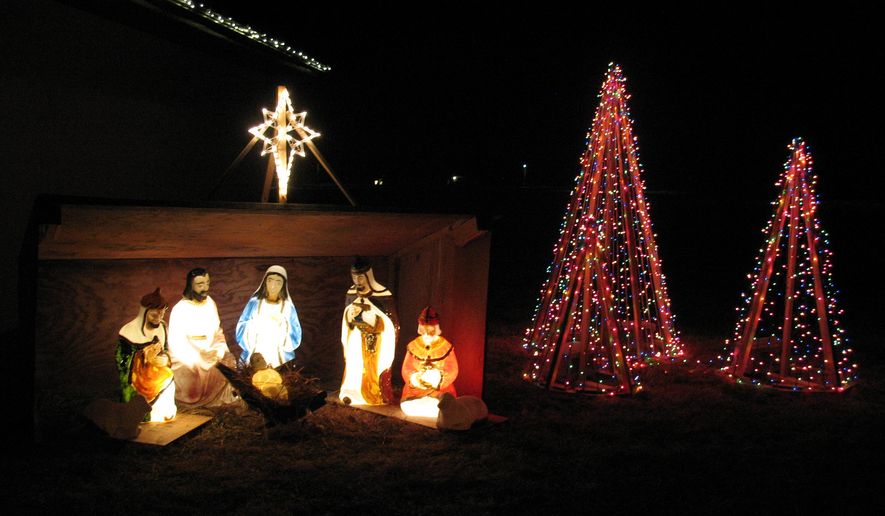Christmas lights have become so affordable that even the humblest of homes often are lit like the Star of Bethlehem. Federal bureaucrats are working to end this. They claim it will make us safer, but the facts don’t back them up.
It’s not uncommon to find strings of mini-lights priced at $1 for a hundred lights, sometimes even less. To cure this excessive affordability, the feds are rushing to save Americans from mass holiday displays. They seem to believe we all are like Clark Griswold, the bumbling father figure in National Lampoon’s “Christmas Vacation” (played by Chevy Chase), who nearly electrocutes himself, starts fires, falls off the roof and short-circuits power in his whole neighborhood as he tries to create a home display that would outdo Rockefeller Center.
The Consumer Products Safety Commission (CPSC) has created an example of regulate first and explain why later. In October they proposed new regulations to outlaw strings of bulbs, lighted lawn figures and similar items that would be declared as hazardous. The red tape deals with certifying wire sizes, fuses, and tensile strength of all “seasonal decorative lighting products.”
This includes Christmas tree lights, lighted wreaths, menorahs, outdoor strands, lawn figures of Jesus, Mary and Joseph, or Santa or Rudolph or Frosty the Snowman. Yes, Kwanzaa, too. CPSC is an equal opportunity Scrooge. The agency estimates that their proposed regulations will impact 100 million items per year with a market value of $500 million.
Of course, those items already are covered by safety regulations and also by industry standards and oversight. CPSC admits that 3.6-million unsafe lights were recalled under existing safeguards in place since 1974.
So what is CPSC’s justification for adding red tape to the red, green, blue, yellow, white and other colored displays? They report 250 deaths from fires or electrocutions by Christmas lights. That’s not 250 deaths per year; it’s 250 deaths since 1980. They had to add together 33 years of statistics to misportray danger.
That averages seven deaths per year in our country of about 320 million people. The worst single year, CPSC reports, had 13 deaths. But most (80 percent) of those deaths were back in the 1980s and 1990s. Since then, deaths have declined annually. In 2013, there was one single death attributed to fire or shock from Christmas lights. One. That also was the average from 2008 through 2013: One death per year. That compares with an average of 13 per year from 1980 through 1993. The number has been declining ever since, without needing burdensome new federal regulations.
CPSC attributes the decline to improved industry standards, as issued through Underwriters Laboratory, and to more fire-resistant home-building techniques.
CPSC is testing the bounds of the often-heard claim that “If it saves only one life, it’s worth it.” Do they believe that regulating 100 million holiday items, adding to their $500 million cost, will save one life per year? Or is the true problem not defective products but defective human behavior? No regulation can counteract stupidity; we all do dumb things at times. But fortunately, Clark Griswolds are rare.
Promoting common-sense in using lights and extension cords is a better approach than more regulations, but that would be counter to the Big Brother, control-everything, build-the-bureaucracy tendencies of federal agencies. Indeed, CPSC publishes safety guides not only for Christmas lights but also for all other household use of electricity. An abundance of safety guides are available from numerous organizations.
CPSC would never admit it, but we’re free to speculate on the true motive: That this is part of the Obama administration’s effort to reduce our use of electricity, lest global warming set the Earth on fire.
Holiday lights are major users of electricity.
CPSC’s comment period closes on Dec. 30th and its proposed regulations could become effective a month later. So enjoy everybody’s Christmas lights this holiday season, while you can.




Please read our comment policy before commenting.